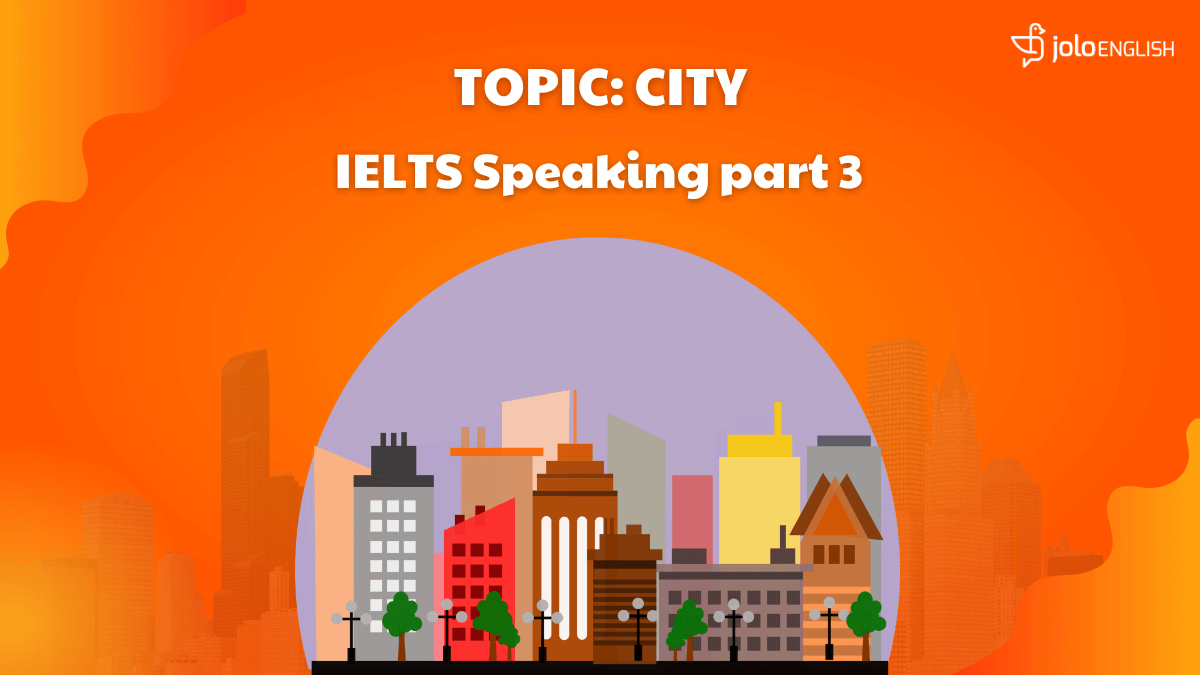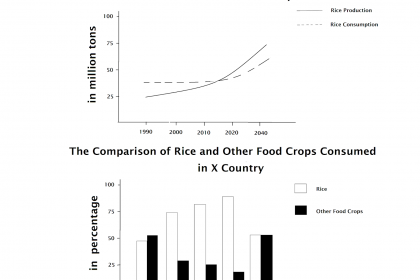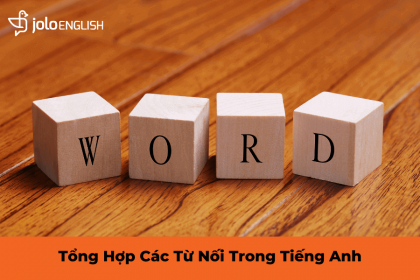Thành phố không chỉ là bối cảnh của cuộc sống hàng ngày mà còn là một chủ đề phong phú và đa dạng trong các bài thi IELTS. Trong phần này, bạn sẽ có cơ hội thảo luận về những vấn đề lớn như sự phát triển đô thị, thách thức của các thành phố hiện đại và những cải cách có thể mang lại lợi ích lâu dài. JOLO sẽ hướng dẫn bạn cách thể hiện quan điểm rõ ràng, phân tích sâu sắc và đưa ra các ví dụ cụ thể để nâng cao điểm số của bạn. Hãy cùng chúng tôi khám phá các bí quyết và chiến lược giúp bạn tỏa sáng trong phần thi này. Chúng ta sẽ bắt đầu ngay bây giờ để bạn có thể chuẩn bị một cách tốt nhất cho kỳ thi IELTS sắp tới!

Danh sách câu hỏi:
1. How do cities differ from towns?
2. What changes have occurred in towns and villages in your country over recent years?
3. What distinguishes large cities from smaller ones?
4. What factors determine whether a place is a good place to live?
5. What major transformations have taken place in your city?
6. How does living in the countryside compare to living in the city?
Sample từng câu:
1. How do cities differ from towns?
→ The main differences between cities and towns lie in their size, population, and economic activity. Cities tend to be larger and more densely populated, with a broader array of industries and services. They usually feature more advanced infrastructure, such as extensive transportation systems, hospitals, and educational institutions. In contrast, towns are smaller and less densely populated, with a greater emphasis on agriculture, local businesses, and tourism.
2. What changes have occurred in towns and villages in your country over recent years?
→ Recently, towns and villages in Vietnam have undergone considerable transformations as a result of urbanization. A significant number of young people have moved to cities in pursuit of better employment prospects, leading to a decrease in rural populations. Nonetheless, certain towns in Thai Nguyen and Bac Ninh provinces have experienced growth and development. Over the past decade, these areas have emerged as industrial centers, drawing major Japanese and South Korean electronics companies.
3. What distinguishes large cities from smaller ones?
→ Large cities, such as Ho Chi Minh City, provide a variety of opportunities and amenities, including extensive job markets, diverse entertainment options, and specialized healthcare services. However, they can also be overcrowded, noisy, and costly. In contrast, smaller cities offer a more relaxed pace of life, tighter-knit communities, and lower living expenses. Yet, they may have fewer job prospects and limited amenities.
4. What factors determine whether a place is a good place to live?
→ Various factors impact the livability of a location. Primarily, security is crucial; a low crime rate and a strong sense of personal safety are fundamental for a comfortable living environment. Additionally, job opportunities play a significant role. A diverse job market not only attracts residents but also fosters economic growth.
5. What major transformations have taken place in your city?
→ Ho Chi Minh City has experienced rapid changes in recent decades. Its skyline has been reshaped by the addition of modern skyscrapers, and infrastructure has advanced with the development of new roads and public transit systems, such as the Ben Thanh - Suoi Tien metro line. Additionally, the city has emerged as a popular tourist destination, drawing visitors with its rich historical heritage, lively culture, and delectable cuisine.
6. How does living in the countryside compare to living in the city?
→ Life in the countryside contrasts sharply with life in the city. The countryside provides a more relaxed pace, tight-knit communities, and better access to nature. Daily life often centers around farming, local businesses, and community gatherings. In contrast, city life is characterized by a fast-paced, diverse, and dynamic environment with abundant job opportunities, cultural attractions, and entertainment options. However, urban areas can also be more impersonal, crowded, and costly.
Hy vọng rằng với sự hướng dẫn của JOLO, bạn đã có thêm nhiều thông tin hữu ích và tự tin hơn để đối mặt với các câu hỏi trong phần 3 của bài thi IELTS Speaking. Hãy nhớ rằng việc hiểu rõ về các vấn đề đô thị và thể hiện quan điểm một cách mạch lạc, cùng với việc đưa ra ví dụ cụ thể, sẽ giúp bạn ghi điểm cao hơn.
Đừng quên luyện tập thường xuyên và áp dụng những chiến lược mà JOLO đã chia sẻ. Chúc bạn có một kỳ thi thành công và đạt được kết quả như mong muốn. Cảm ơn bạn đã theo dõi và đồng hành cùng JOLO. Hãy tiếp tục khám phá các tài nguyên khác của chúng tôi để chuẩn bị thật tốt cho mọi thử thách trong kỳ thi IELTS. Chúc bạn học tốt và hẹn gặp lại trong các bài viết tiếp theo!
Để biết thêm chi tiết về các khóa học và tài liệu luyện thi IELTS, bạn có thể tham khảo thêm tại https://hoc-ielts.jolo.edu.vn/ hoặc liên hệ với JOLO qua hotline 093.618.7791 để được tư vấn và hỗ trợ.





















